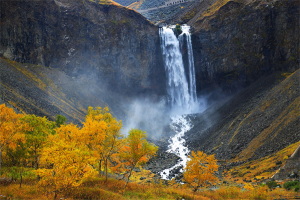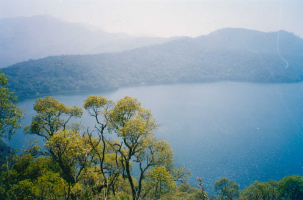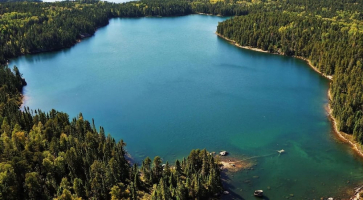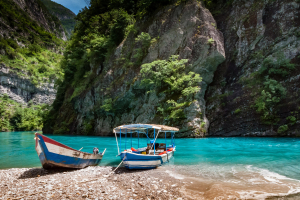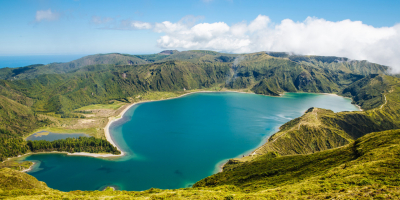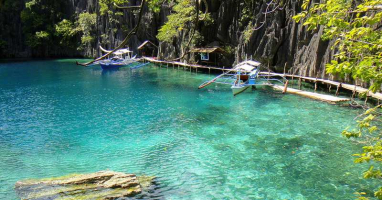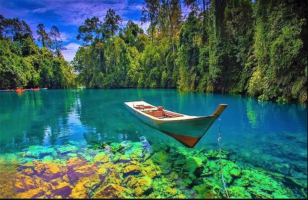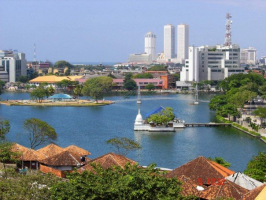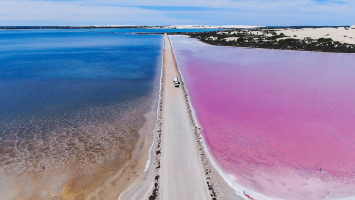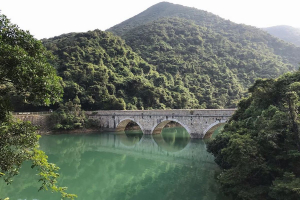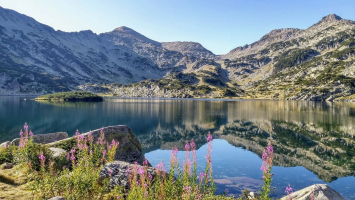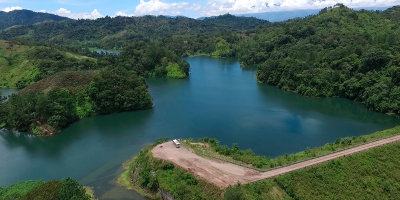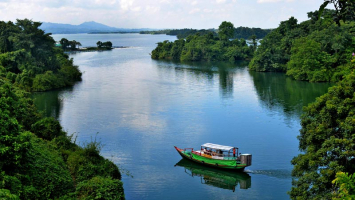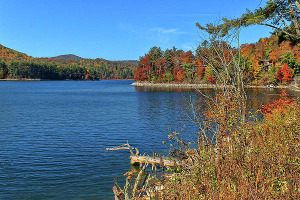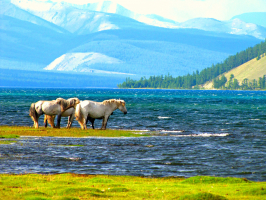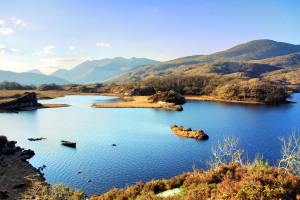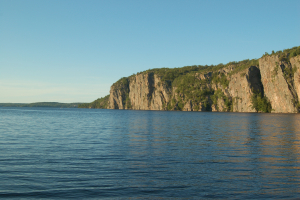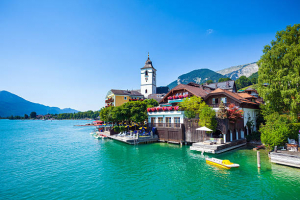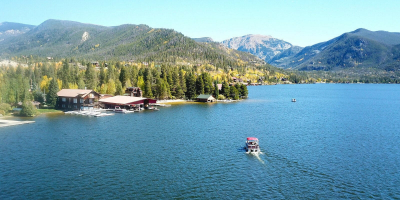Top 10 Most Beautiful Lakes in China
China is one of the largest countries in the world by area. So China has extremely rich natural resources along with countless natural beauties. Those sights ... read more...have attracted a lot of domestic and international tourists. Let's explore with Toplist the most beautiful lakes in China!
-
One of the most beautiful lakes in China is Qinghai lake. Meaning "indigo lake" in Tibetan and "Lake Kokonor" in Mongolian, Qinghai Lake is regarded as China's most beautiful lake and the country's largest inland saltwater body. The excellently scenic image of a blue lake, golden rapeseed blossoms and distant mountains in the months of July and August is what makes Qinghai Lake the most attractive. Two national highways, 109 and 315, currently span Qinghai Lake, which once served as a crucial crossing point for the Tang-Tibet Ancient Road and the Ancient Silk Road.
Originating from rainfall and surface runoff from more than 40 rivers, Qinghai Lake has situated in northeastern Qinghai Tibet Plateau and northwesterly Xining City, Qinghai Province. It is encircled by four high mountains, which range in height from 3600 to 5000 meters: the magnificent Datong Mountain in the north, the majestic Riyue Mountain in the east, the rolling Qinghai South Mountain in the south, and the craggy Rubber Mountain in the west.
The greatest time to visit Qinghai Lake is in the fall when the huge prairie is covered in golden rape flowers, a cool breeze carries a fragrant scent, scattered herdsman tents resemble stars in the sky, herds move like clouds, and the sunrise and sunset create a poetic picture. Along the eastern shore of Qinghai Lake, there are two son lakes: Gahai Lake and Erhai Lake, as well as a wide plain.
Surface area: 4,543 km2
Location: Juncture of Gangca County, Gonghe County, Haiyan County, Hainan Tibetan Autonomous Prefecture, Qinghai Province.
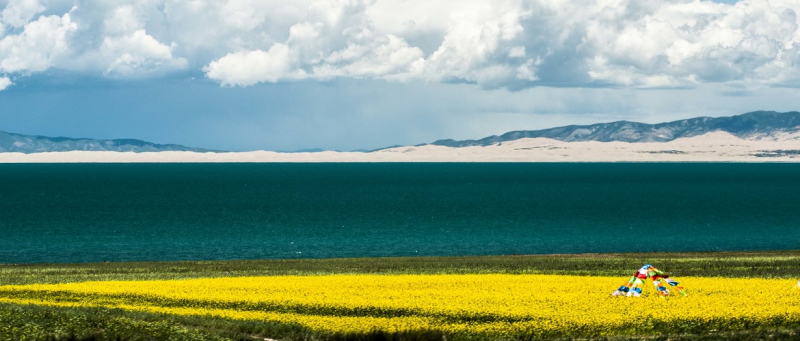
Photo: greattibettour.com 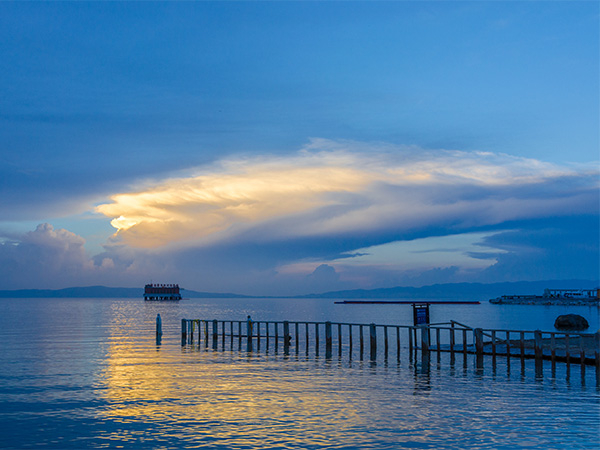
Photo: topchinatravel.com -
Kanas is the Mongolian name for a stunning and enigmatic lake. Kanas Lake, one of China's most stunning lakes, is located in the country's far north and has been designated a National AAAAA Scenic Spot, National Geopark, National Forest Park, China Nature Reserve, and National Cultural Heritage. It is referred to be the Fairyland on Earth because of the gorgeous Kanas Lake colored clean snowy mountains and wide green woodlands.
The source of the Kanas River and the deepest moraine-dammed lake, Kanas Lake has an underwater depth of more than 188 meters. Amazing clouds, sea, and Buddha light panoramas only occur during sunshine following rain, and Kanas Lake's spectacular mystery is attributed to a thousand-meter-long levee of logs that were accumulated by blowing wind against the tide.
Camel Neck Bay, which appears to bend like a camel neck as you approach Kanas Lake Valley, is where the waters shift sharply to flow to the far north basin. Continue on via Huaqiu Valley to Wolong Bay, a beautiful dragon-shaped island surrounded by an emerald lake and verdant trees along the beach. From the observation point near the eastern highway, which is 1500 meters high, one can see Wolong Bay in its ideal state. For an additional 1 km, a stunning arc known as Moon Bay curves like a curved moon dropped into the lush gorge. A blue jade belt twining in the lush ground for the riverbed creates several half-moon bays and two distinctive footprint-style small sand beaches, and the waters here present various kinds of colorful looks throughout each day and season.
Surface area: 45,73 km2Location: Kanas Scenic, Burqin County, Altay City, Xinjiang.
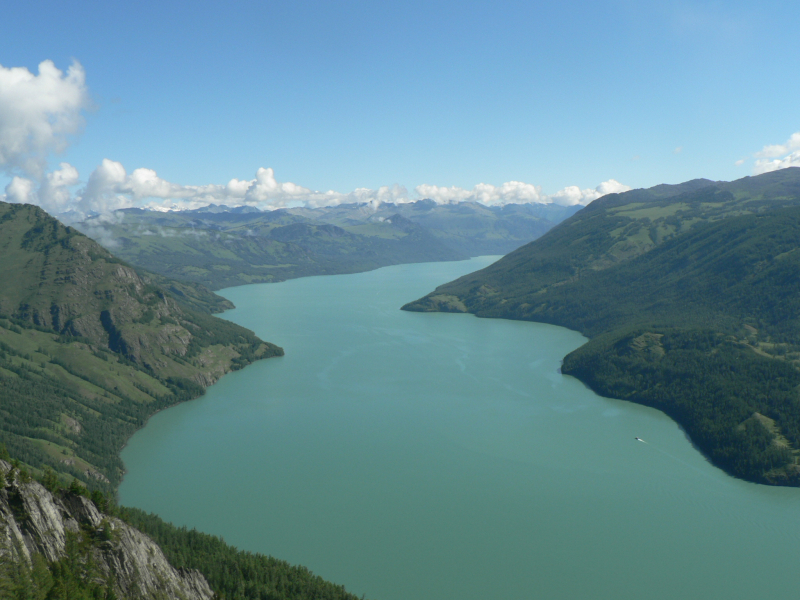
Photo: wikipedia Photo: https://www.youtube.com/watch?v=JDx7QmEJLRg -
The next position on the list of the most beautiful lakes in China is Namtso Lake, the second largest lake in Tibet and the third largest saltwater lake in China, is revered as one of the three most sacred lakes in Tibet, along with Yamdrok Lake and Manasarovar Lake. Namtso, which in Tibetan means "Heaven Lake," is a rectangular diamond that has fallen into the arms of snow-covered mountains. A large body of aquamarine water, distinct routes connecting the Marnyi Stones, numerous flickering prayer flags, the holy and pure.
Numerous tourists are drawn to Namtso Lake not just for its breathtaking beauty but also because it is considered to be the holiest site in Tibetan Buddhism, drawing many locals and Buddhist pilgrims. Awarded the third most beautiful lake in Chinese National Geography, the lake's azure blue water changes color throughout the year to please the eyes and cleanse the soul.
Namtso Lake, which is located in central Tibet and roughly 250 kilometers south of Lhasa, is protected by the massive Nyenchen Tanglha Mountains in the south. Additionally, there are five bylands that extend into the lake in a variety of directions, each of which is said to be an incarnation of one of the Five Dhyani Buddhas. Tourists can observe the Husband & Wife Stone, the door deity of Namtso Lake according to local folklore, the Yingbin Stone, which is decked with numerous colorful prayer flags, and additional temples with authentic Buddhist statues as they travel through the byland.
Surface area: 1,920 km2
Location: Damxung County, Lhasa, Tibet.
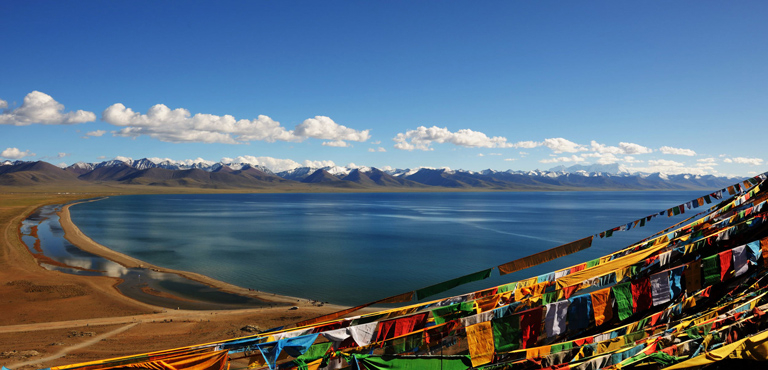
Photo: chinadiscovery.com 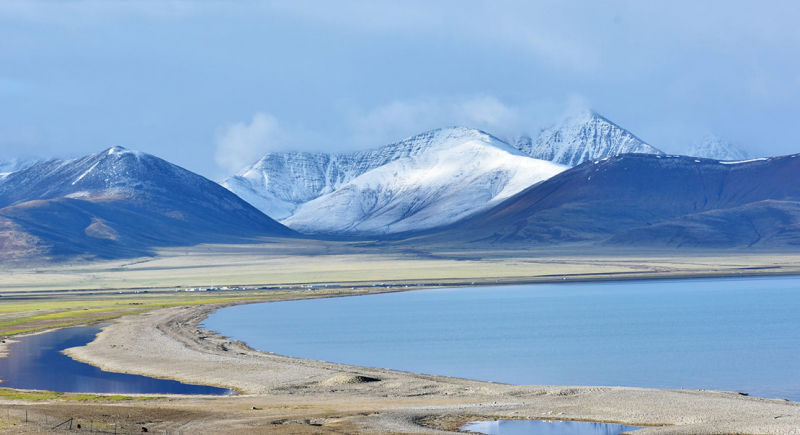
Photo nomadictibet.com -
Tianchi Lake on Changbai Mountain, also known as Changbai Mountain Pool in the Sky, is the largest and tallest volcanic lake in China and the deepest highland lake in the world. It was naturally generated by an erupting volcano long ago. The oblong Tianchi Lake appears to be a lovely jasper set in Changbai Mountain's lofty peaks. China and North Korea still share a natural lake border where one can see the neighboring peaks on the opposite side.
Numerous high mountains surround the area, and the Songhua River, Tumen River, and Yalu River all have their headwaters in the clear, turquoise lake. The tranquil, transparent Tianchi Lake, surrounded by 16 peaks and one outflow of Changbai Waterfall, has already evolved into a mysterious place where monsters occasionally surface and drag horses into the deep lake.
Visitors can access the lake at the summit of Changbai Mountain's dormant volcano from the north, west, and south slopes; as a result, varied viewing angles will provide distinct views of the landscape. The greatest time to visit Tianchi Lake is in the middle of summer when the evaporating water emerges bluer than the sky, clouds and fog are at their lowest, and the lake is most likely to show its real colors. The lake will become entirely white and coated in thick ice and snow during the cold winter days. On the east side, White Cloud Peak (2691m) is the highest peak in northeastern China, and Tianwen Peak (2670m) enjoys a good viewing sight of this wonderful blue jewel. Jiangjun Peak (2749m), located in North Korea, is the highest peak enclosing Tianchi Lake.
Surface area: 4.9 km2Location: Fusong County, Baishan City, Jilin Province.
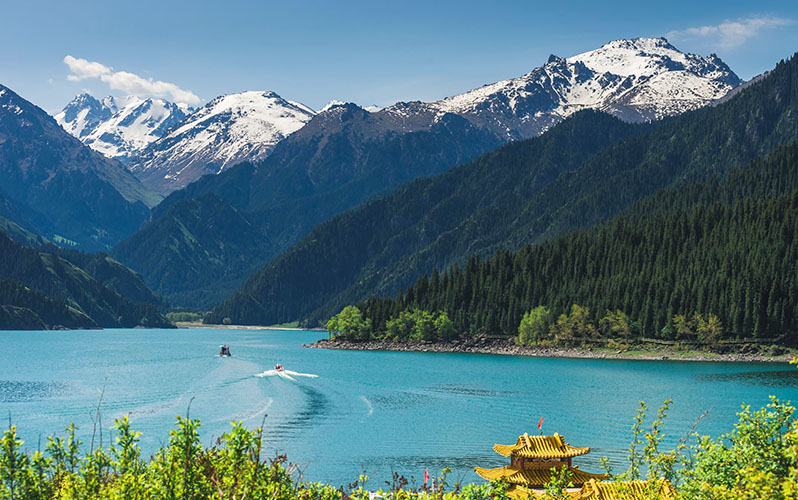
Photo: chinadiscovery.com Video: https://www.youtube.com/watch?v=yZYlJGhmAIg -
The only World Cultural Heritage site, one of the top 10 scenic locations in China, and the heart and soul of Hangzhou are all located in West Hangzhou. West Lake, a renowned poet of the Song Dynasty, famously praised Hangzhou West Lake for being the most beautiful among China's 36 west lakes.
Every season has its own beauty at West Lake, with its stunning landscape in the spring, endless lotus in the summer, artistic moonlight reflected in the lake in the fall, and oblique crimson gloom in the poetic winter painting. Based on the scale, West Lake is divided into five parts: Outer West Lake, West Inner Lake, North Lake, Little South Lake, and Yue Lake. These areas are separated by Lonely Hill, White Embankment, Su Embankment, and Yanggong Embankment. Leifeng Pagoda on Sunset Mountain faces against northern Baochu Pagoda on Stone Mountain across the lake, creating an amazing location of one mountain, two pagodas, three islands and banks, and five lakes in West Lake as a result. Three additional small islands stand in the central region and the White and Su Embankments pass over the lake.
For its natural beauty and historical artifacts, West Lake has influenced poets and painters throughout Chinese history. It has also been one of the most significant sources of inspiration for Chinese garden designers. In 2011, it was designated as a UNESCO World Heritage Site, with the description that it "inspired garden architecture in the rest of China as well as Japan and Korea over the ages" and that it "reflect[ed] an idealized synthesis between humans and nature".
Surface area: 6.4 km2Location: No.1 Longjing Rd, West Lake Scenic, Xihu District, Hangzhou City, Zhejiang Province.
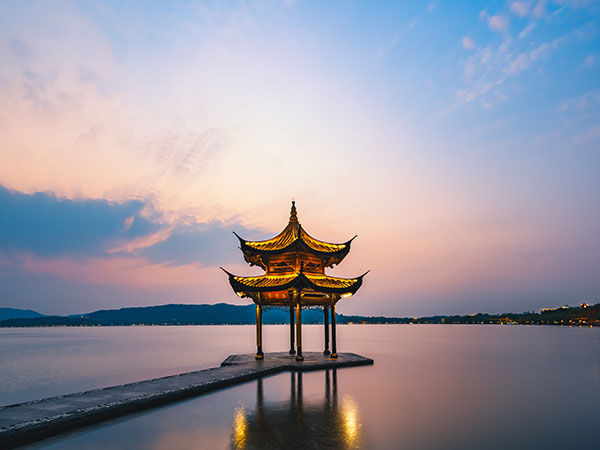
Photo: topchinatravel.com 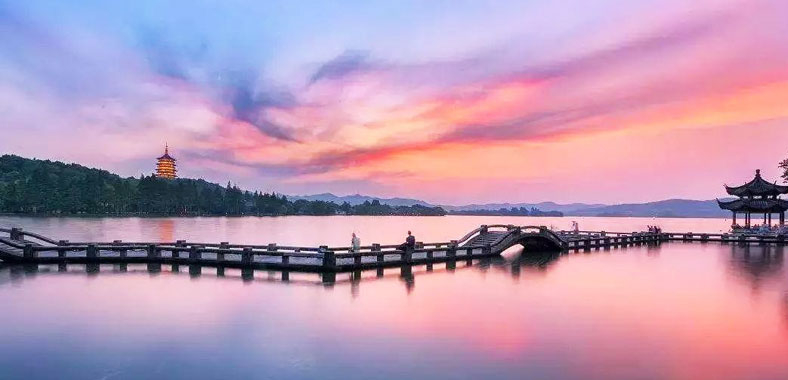
Photo: chinadiscovery.com -
As the third-deepest freshwater lake in China and the tallest lake in the Yunnan Province, where the Mosuo, Yi ethnicity predominates, Lugu Lake was originally called the lake in the valley because, in the Mosuo language of the Naxi nationality, Lu signifies valley and Gu denotes inside. The captivating Lugu Lake made up of 5 islands in the lake, 4 bylands, and 1 long island on the lakeshore, all in distinct shapes, is situated in southwest Sichuan and southeast Qinghai Tibet Plateau and serves as the ideal hub for Shangri-La trip circuits.
The Mosuo people, who dwell around the lake, are recognized as the Last Kingdom of Women in the world and the Living Fossil of Human Matrilineal Society because of their archaic maternal family rituals and strange male-leaving marriages. An American academic previously referred to Lugu Lake as a magnificent home for immortals.
The finest time of year to take pictures of Lugu Lake later falls, when flowers bloom into picturesque paintings and trees line the coast dressed in a variety of hues. Winter is the finest time to observe waterfowl since many uncommon birds, like swans, black-necked cranes, and others, migrate here to live. The sole theme museum systematically showing Mosuo history, culture, and folk practices is the Mosuo Museum, which welcomes visitors interested in local culture. More lovely natural areas include Lover Beach, Daluoshui Village with old ethnic buildings, and Bay of Goddess, a serene bay recognized as being in eastern Hawaii.
Surface area: 48.5 km2
Location: Shared both by Luguhu Town, Yanyuan County, Liangshan Yi Autonomous Prefecture, Sichuan Province & Yongning Village, Ni
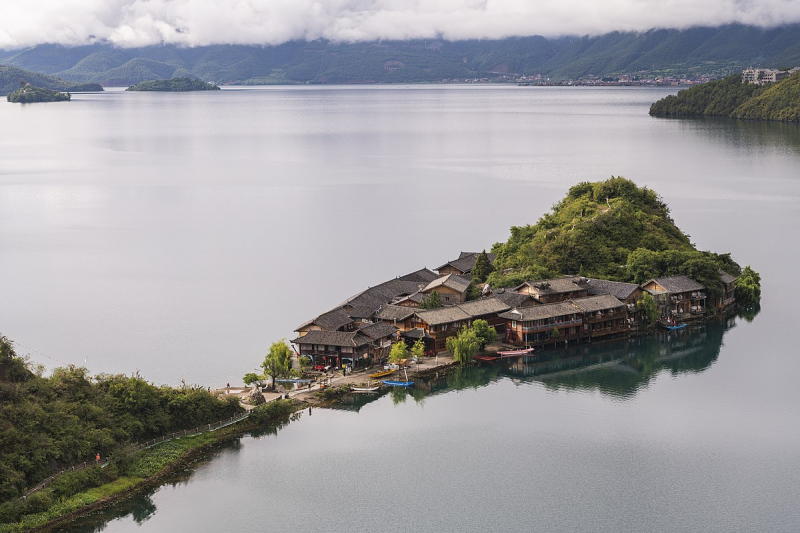
Photo: wikipedia 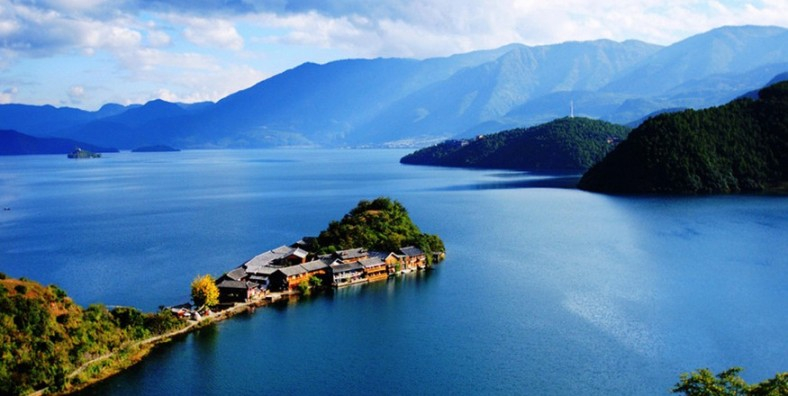
Photo: yunanexploration.com -
Along with Namtso Lake and Manasarovar Lake, Yamdrok Lake, also known as Jasper Lake and Upper Coral Lake in Tibet, is one of the three most sacred lakes in Tibet. A dark jade eardrop nestled in the arm of enormous mountains and a jade belt ornamented with alpine snow land, it is elevated to a height of 4,441 meters above sea level and is home to Tibet's biggest hydropower plant and highest pumped-storage hydroelectricity.
Local Tibetans think that making a pilgrimage around Yamdrok Lake is equivalent to visiting Lhasa once, which will harvest blessings from the Buddha for an entire year. Due to its sanctity, the lake is also the largest haven for different species of wild birds, who rest on 21 little islands.
The largest interior lake in the Himalaya Mountains and the most stunning lake in southern Tibet is Yamdrok Lake, which is located about 70 kilometers to the northeast of Lhasa. When you cross the Gangbara Pass in Hangzhou, a stunning irregular sapphire appears and spreads its body out to cover 70 times West Lake. It takes almost 30 minutes to go from the past to the lakefront, where tourists can gaze in awe at Yamdrok Lake's breathtaking splendor. Yamdrok Lake is one of the most beautiful lakes in China.
Surface area: 638 km2Location: Nagarze County, Shannan Prefecture, Tibet.
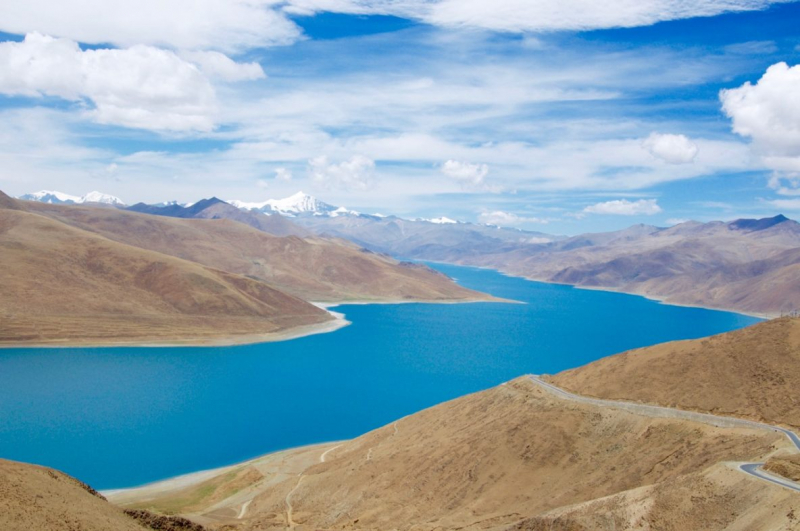
Photo: tibetpedia.com 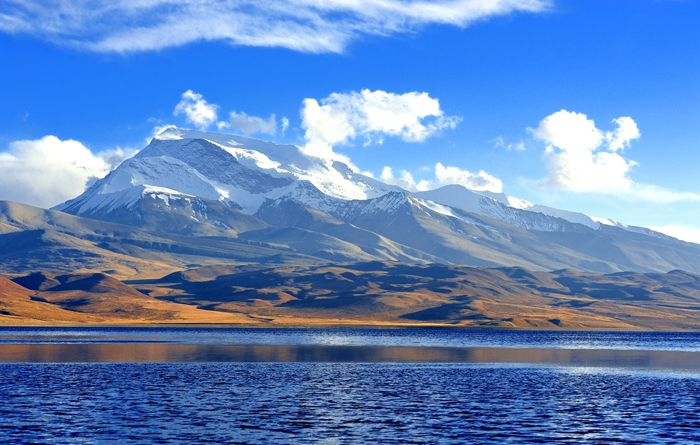
Photo: m.visitourchina.com -
The second-largest freshwater lake, Erhai Lake, is located in a suburb of Dali City and resembles a small human ear with two exits. When the jade moon reflects on the serene lake at every mid-autumn festival, it becomes one of Dali's four main views. The lake is a stunning natural feature and the mother lake of the Bai nationality, not just rich in aquatic resources and high-quality waters.
The greatest way to appreciate the flawless crystal gem resting in mountain groups, experience the amazing peace in the lyrical artwork, and take a boat is to do a circuit along the 30km shoreline. With hills on three sides, including Chicken Foot Mountain to the east and Little Putuo Mountain to the south, Shuanglang Town, the location of Nanzhao Culture Island, is one of the most picturesque places in this region.
The Erhai Park, which includes a pavilion, swimming pool, botanic garden, zoo, and amusement park, is located on the southeast coast and makes a great vantage point for Cang Mountain and Erhai Lake. The water temperature of the summer resort is moderate enough to be used for swimming in the winter. The Dali Ancient City is located in the west and offers a clockwise tour of its streets, academies, temples, and ruins, as well as the Chongsheng Temple and Three Pagodas, an important Tang Dynasty pagoda in China.
Surface area: 250 km2
Location: No.1 Erhe South Rd, Xiaguan, Dali City, Yunnan Province.
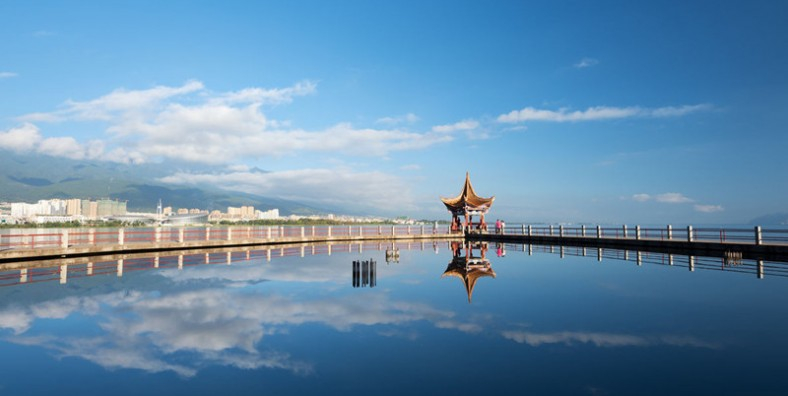
Photo: yunnanexploration.com 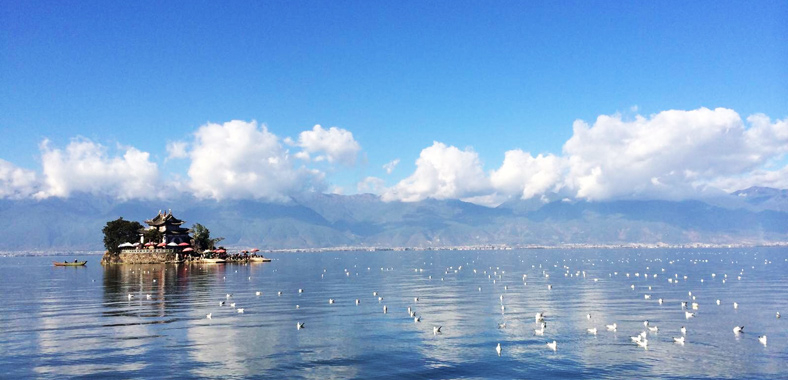
Photo: chinadiscovery.com -
The next position on the list of the most beautiful lakes in China is the Kunming Green Lake, formerly known as the Nine Dragon Pond and formed from the waters of the nine springs. It is praised as an emerald inlaid in Kunming City with the best central viewings and is situated in west Wuhua Mountain. The best two attractions are the enormous cluster of lush lotus in the summer and the swarms of red-billed gulls migrating in from Siberia in the winter.
One of the eight best landscapes in Kunming, according to Wang Sheng's prose poem about the city written during the Yuan Dynasty, is the Spring Scenery of Green Lake. Green Lake offers unique beauty and local culture, for the nationally renowned Yunnan University and a site where great writers Shen Congwen, Zhu Ziqing, and Wu Mi discussed history, enjoyed tea, and explored good reads located nearby. Green Lake is named for the extremely green water in all seasons and willows along the embankment.
The park is divided into five sections the east-west Tang Embankment and the south-north Ruan Embankment. Visitors can enter the park from four different entrances in four different directions. The Yunnan Military Academy, a two-story, yellow-painted building in Westside, is one of China's top three military academies and the site of the Chinese Revolution. The Statue of Nie Er on Southwest Island, Fish-watching Tower, and Osmanthus Garden are places to explore the inner beauty after crossing the Nine-Bend Bridge.
Surface area: 0,21 km2
Location: No.67 Cuihu South Rd, Wuhua District, Kunming City, Yunnan Province.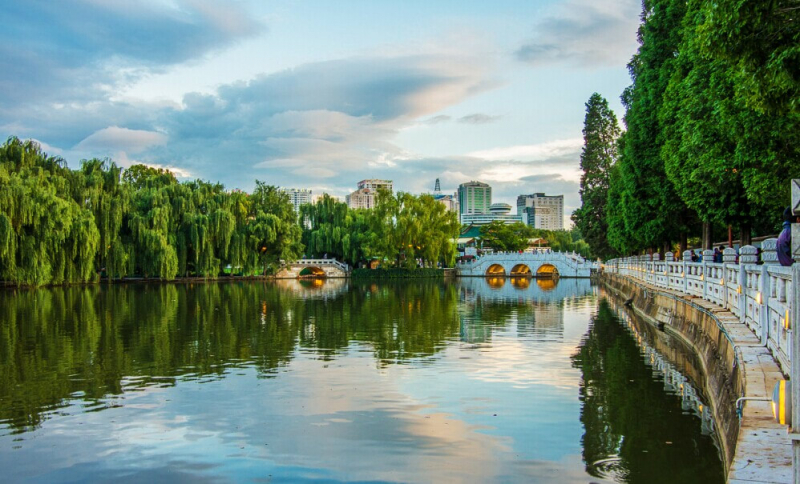
Photo: wendyweitours.com 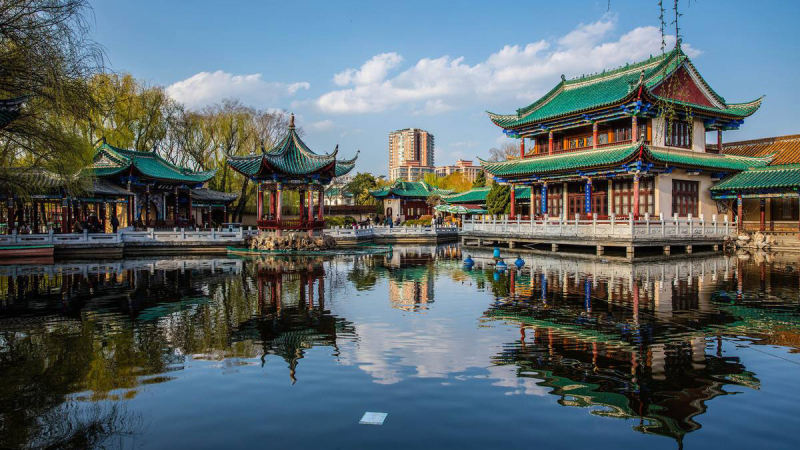
Photo: westchinatour.com -
Thousand-island Lake is a National AAAAA scenic region and a well-known lake with the most islands in the world. It was created as a reservoir of the Xinanjiang Hydropower Station, China's first large-scale self-designed and constructed hydropower station. Due to its excellent national first-class level water quality, which is suitable for direct consumption, Thousand-Island Lake is hailed as having the Cleanest Water in the World. Three thousand times larger than West Lake, Thousand-island Lake has an impoundment of 17.84 billion cubic meters.
The captivating green and purity are what give Thousand-island Lake their beauty. At first glance, undulating hills in the distance appear to be stacked in multiple layers, embedded in the lush, lush landscape paintings of blue sky, jade lake, and starry islands. A harmony of diverse greens in the lovely lake is created by the natural color transition between each island.
More interestingly, the water in Thousand-island Lake changes color with the seasons and weather, appearing white on foggy days and changing from green with yellow in the spring to emerald green in the summer to crystal-like in the fall.
The Chinese character made up of numerous green islands is best seen from Huangshan Peak, which is located in the southeast lake area. Additionally, visitors can go to Tianchi Island, a former quarry site excavated during the Southern Song Dynasty, and Osmanthus Island to see masses of osmanthus trees growing wild.
Surface area: 4,128 km2
Location: Menggu Rd, Chunan County, Hangzhou City, Zhejiang Province.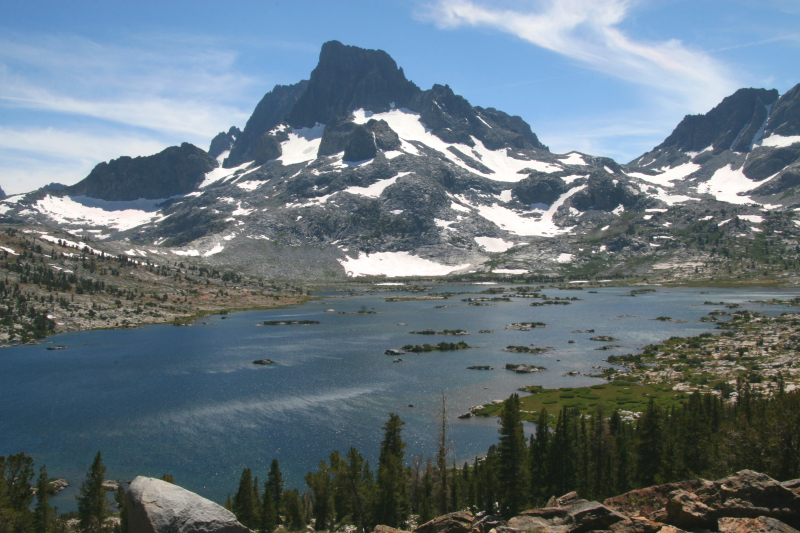
Photo: wikipedia 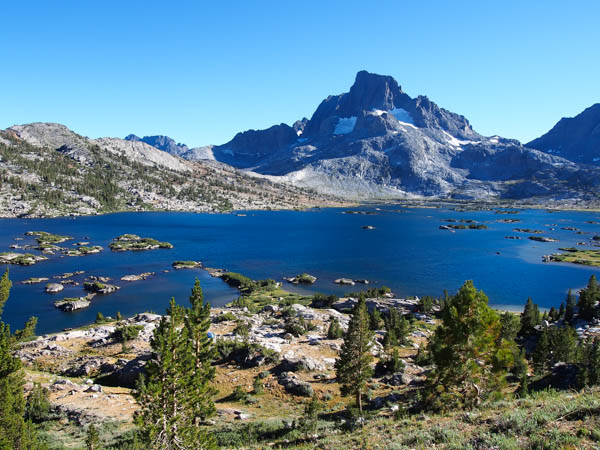
Photo: backcountycow.com












